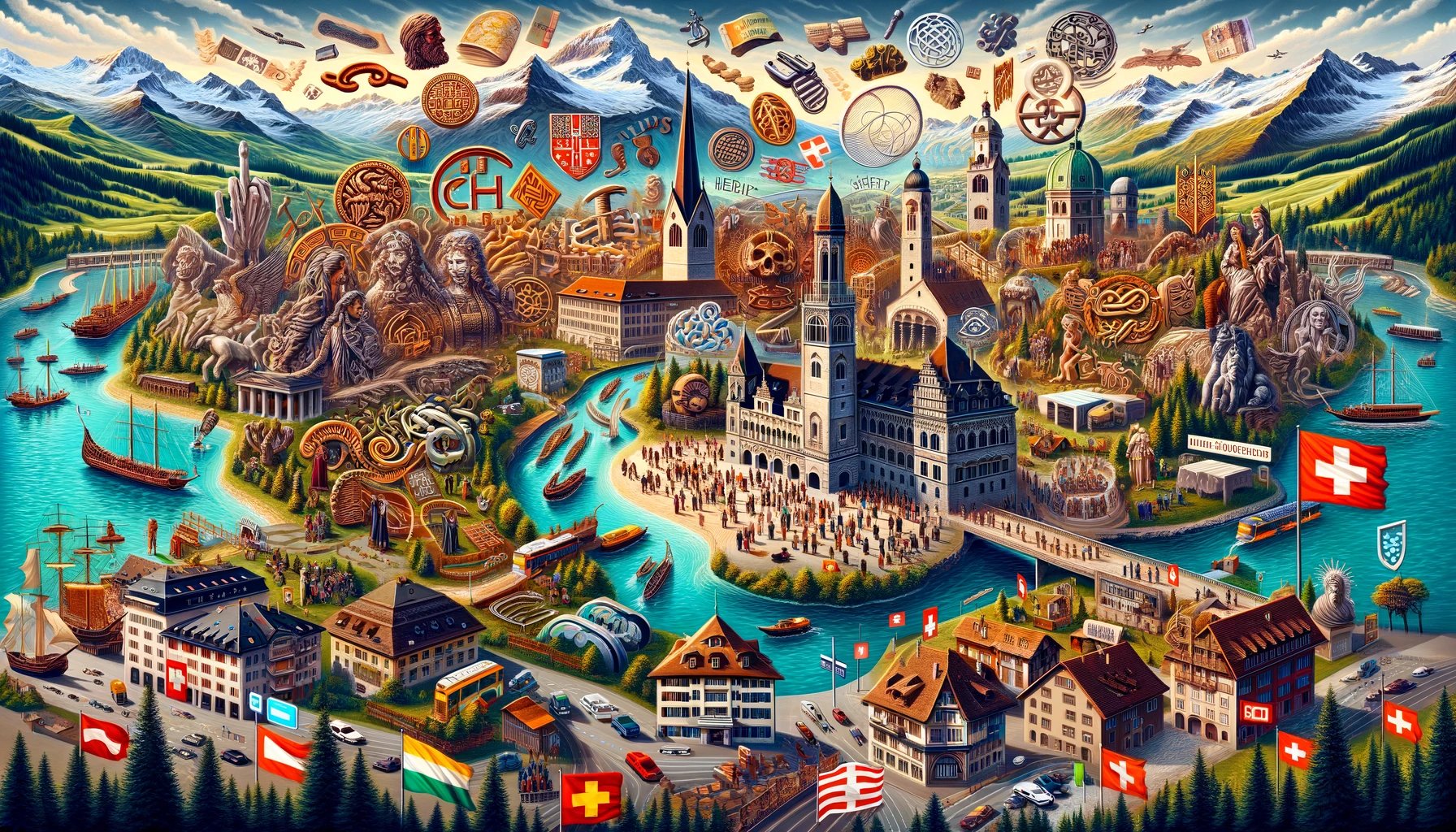Why is Switzerland “CH”? Behind the Swiss Country Code

Switzerland evokes images of the Alps, delicious chocolate, and picturesque villages, but its “CH” abbreviation reveals a deeper story. This two-letter code stands for “Confoederatio Helvetica,” Latin for the Swiss Confederation, reflecting the country’s diverse history and cultural identity.
In this article, we will explore:
- The historical roots of “CH” and “Helvetia” dating back to ancient tribes and Roman times
- How the abbreviation is used today in domains, licenses plates, and money
- Switzerland’s blended culture across different language regions
- The economic prosperity and political neutrality that “CH” has come to represent globally
Understanding the meaning behind Switzerland’s shorthand “CH” sheds light on this multi-faceted nation, from its rich past to the principles it embodies today on the world stage.
Historical Roots of “CH” and “Helvetia”
The origins of “CH” date back to ancient times. The Helvetii were a Celtic tribe that inhabited the Swiss plateau before the Roman conquest in the 1st century BC. Their name lived on through the Latin term “Helvetia,” used to describe the region during the Middle Ages when Latin was the language of diplomacy and scholarship across Europe
Helvetia personified Switzerland, portrayed as a female allegory wearing flowing robes and armor while carrying a shield emblazoned with the Swiss flag. The Helvetic Republic adopted in 1798 also referenced this Latin name, emphasizing the country’s roots.
Modern Usage of “CH”
When the Swiss Confederation was founded in 1848, “Confoederatio Helvetica” was instituted as the country’s official Latin name. As an abbreviation, “CH” became the standard country code, a neutral designation across Switzerland’s linguistic and cultural diversity.
Today, “CH” appears on Swiss domains (.ch), license plates, coins, and stamps. It represents Switzerland in international settings like the ISO 3166 standard and the Olympics. The code encapsulates both the old and new: honoring ancient Helvetian heritage while symbolizing modern multicultural unity.
Switzerland’s Blended Culture
With four national languages – German, French, Italian, and Romansh – Switzerland embraces a rich regional diversity. The German-speaking majority resides in the central and eastern areas. French dominates the west. Italians cluster around the southern canton of Ticino. Romansh uniquely traces Latin roots.
This cultural blend stems from complex migration patterns and intermarriage over centuries. The varied linguistic regions cross religious lines as well, weaving Switzerland’s identity out of threads of history, topography, and politics.
Economic Prosperity and Political Neutrality
“CH” has come to signify Switzerland’s stability, prosperity, and neutrality on the global stage. Its dynamic economy exhibits low unemployment and robust GDP growth, paired with excellent infrastructure and a strong social safety net.
Long-held neutral foreign policy also allows Switzerland to play peacemaking roles in international conflicts. Though opening more to global cooperation like the UN, the country still guards its sovereignty. The Swiss model of direct democracy and local control yields cautious, moderate policies reflecting popular consensus.
In short, “CH” encapsulates the essence of Switzerland – rooted in the past yet forward-looking, independently minded yet internationally engaged. This simple two-letter code tells the richer story behind one of Europe’s most fascinating and enigmatic countries.